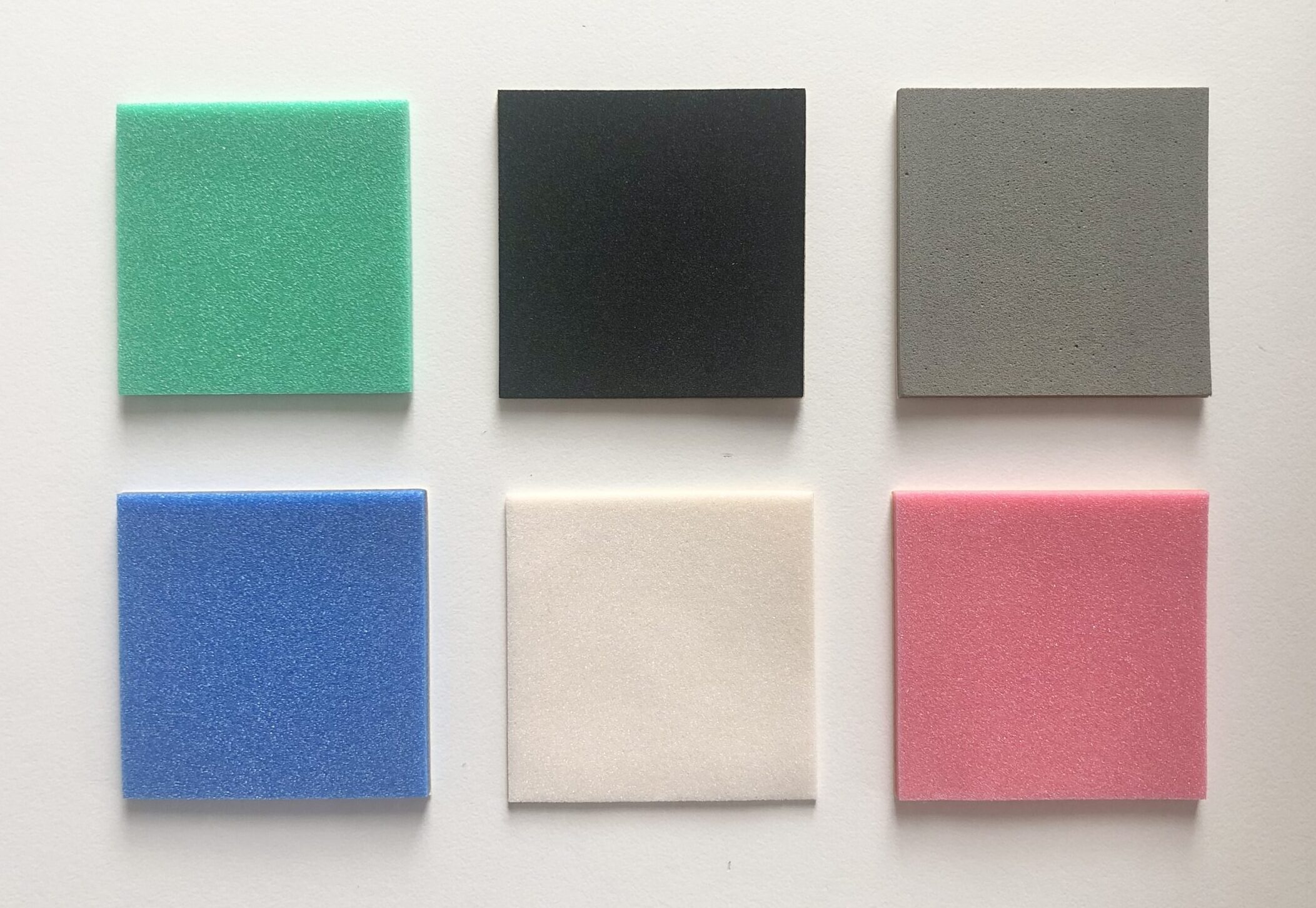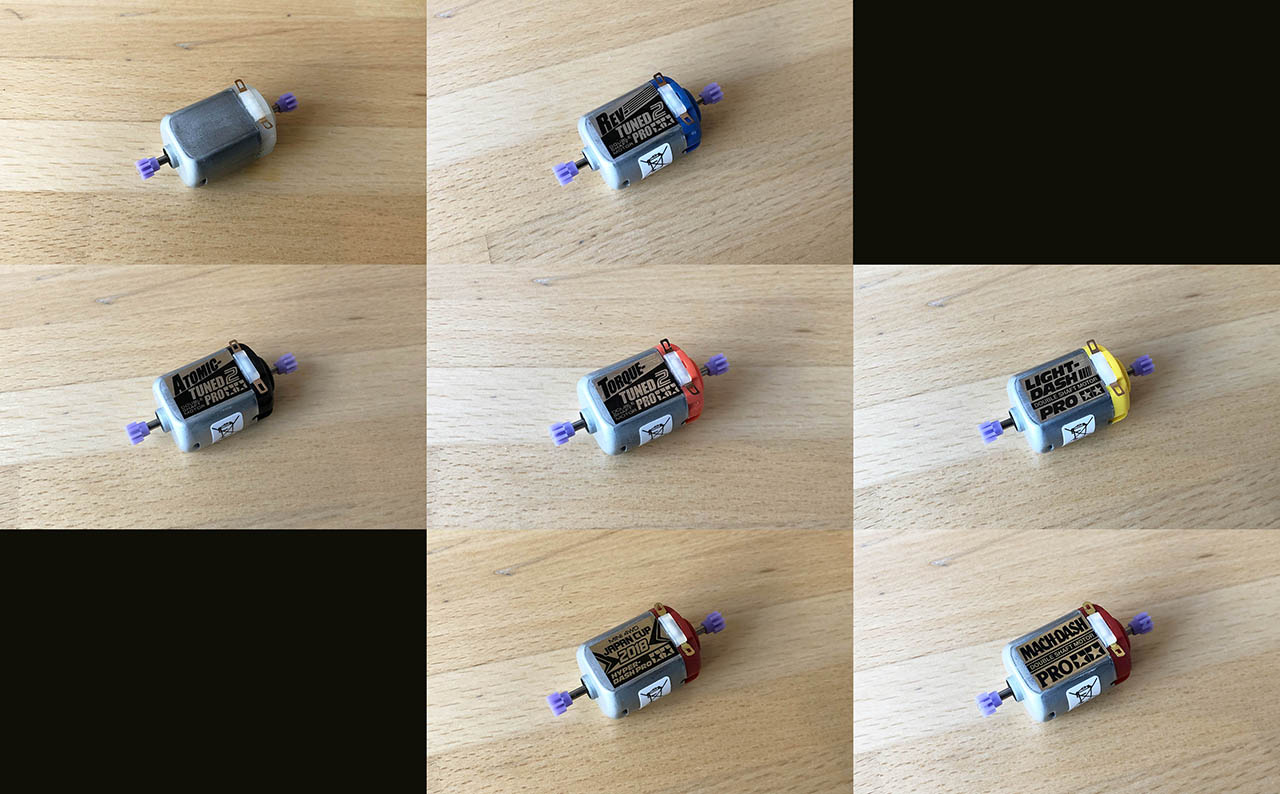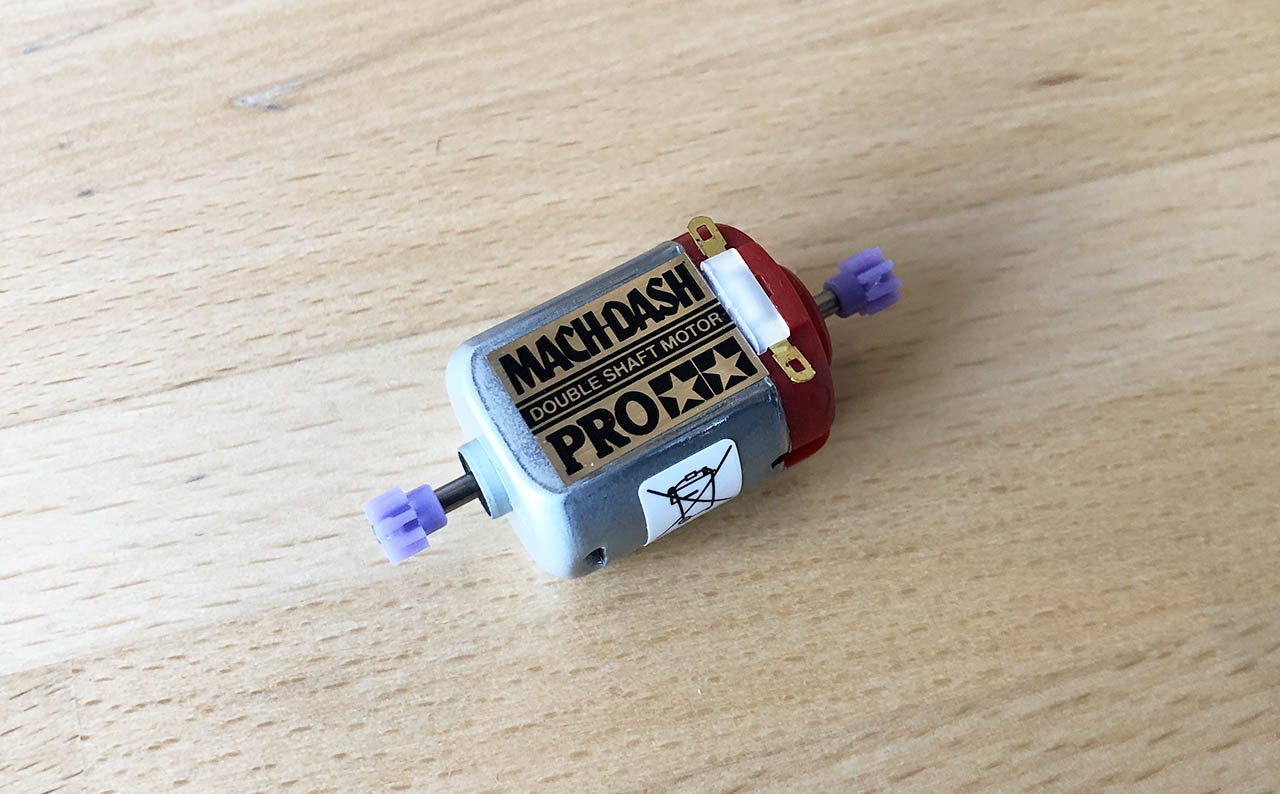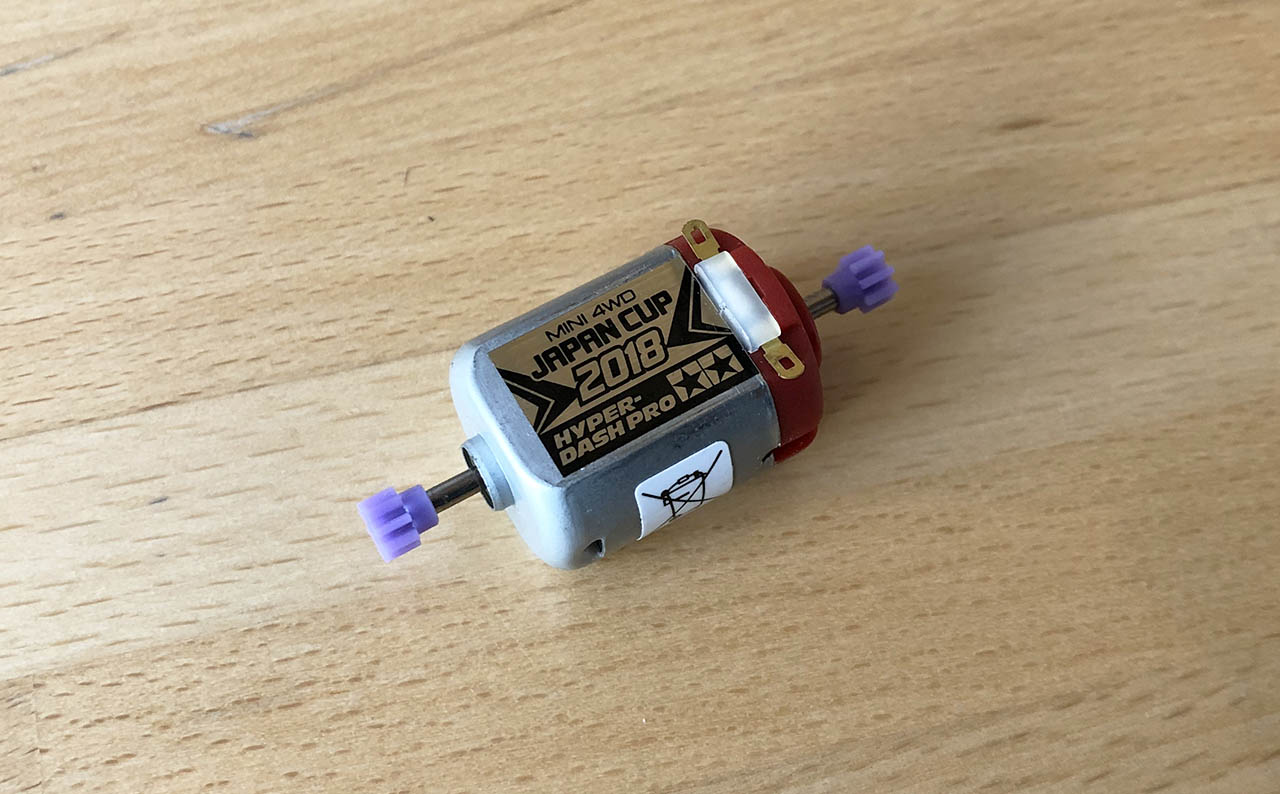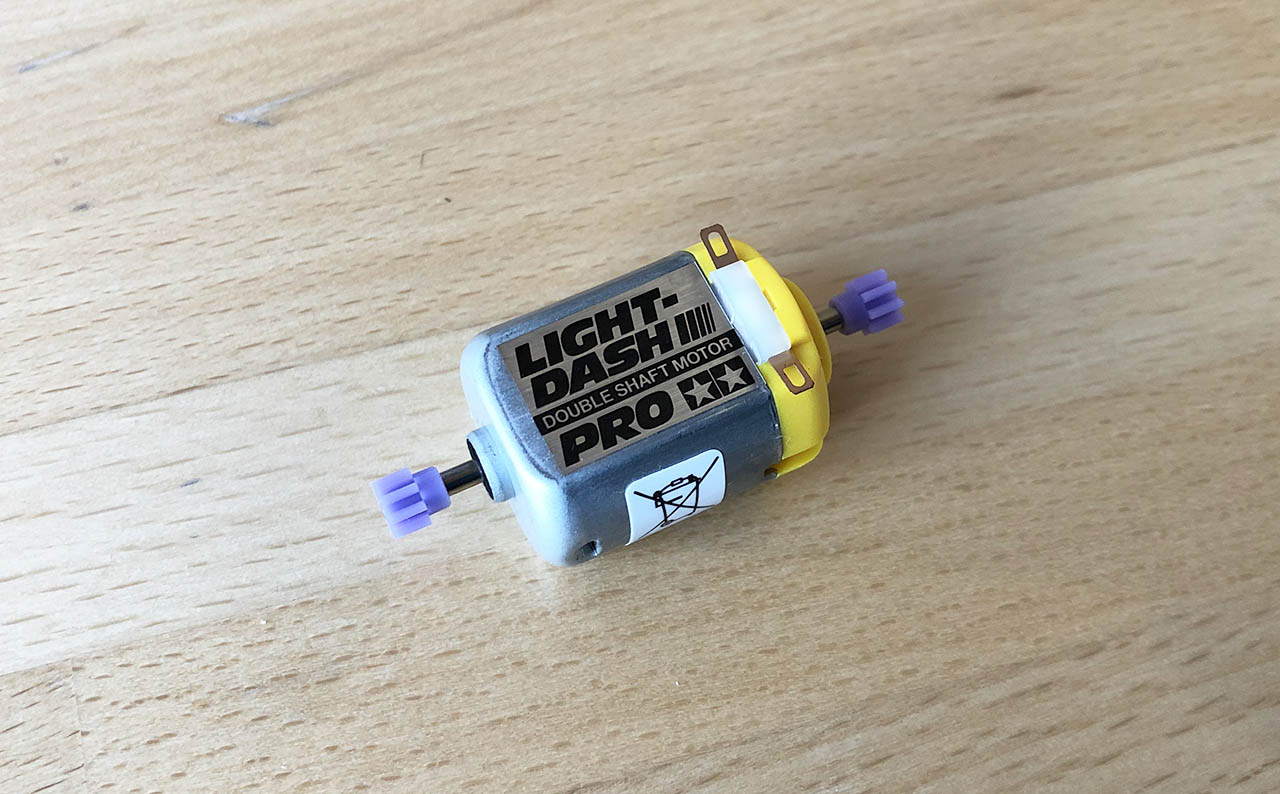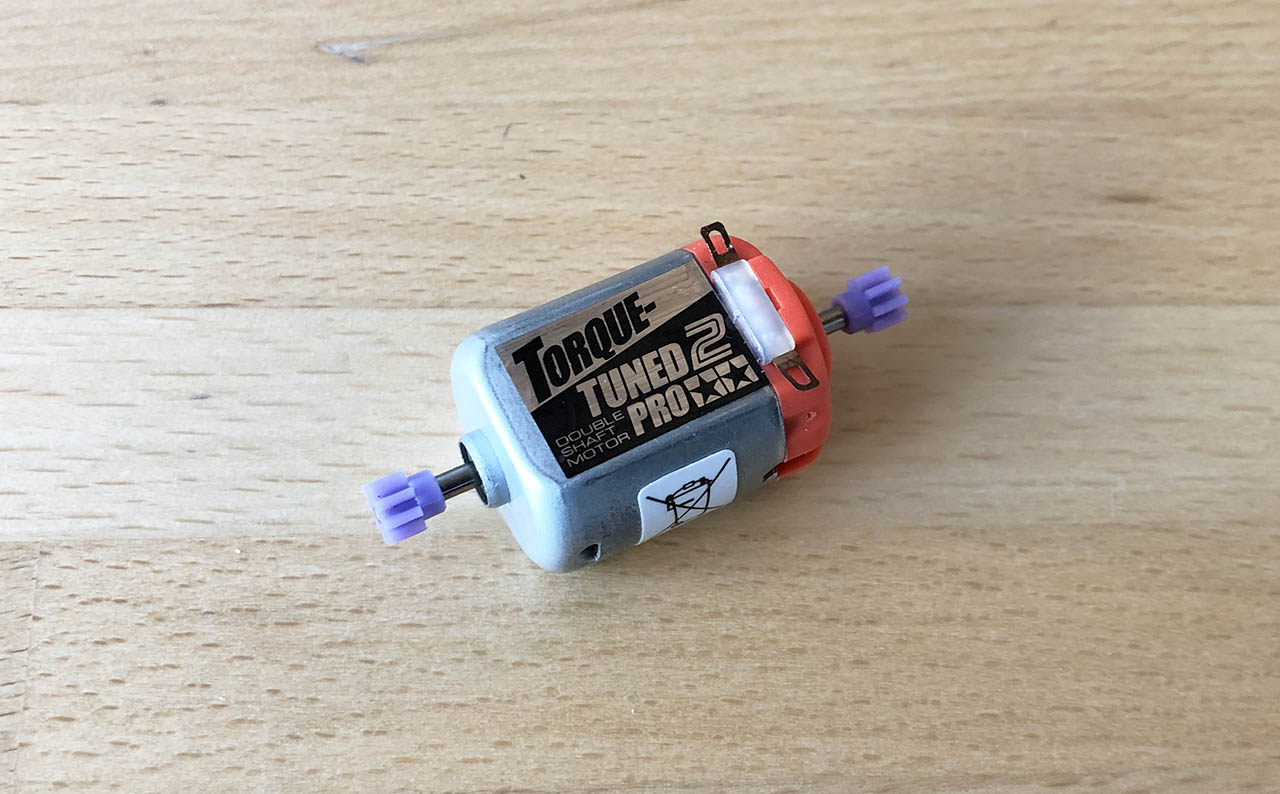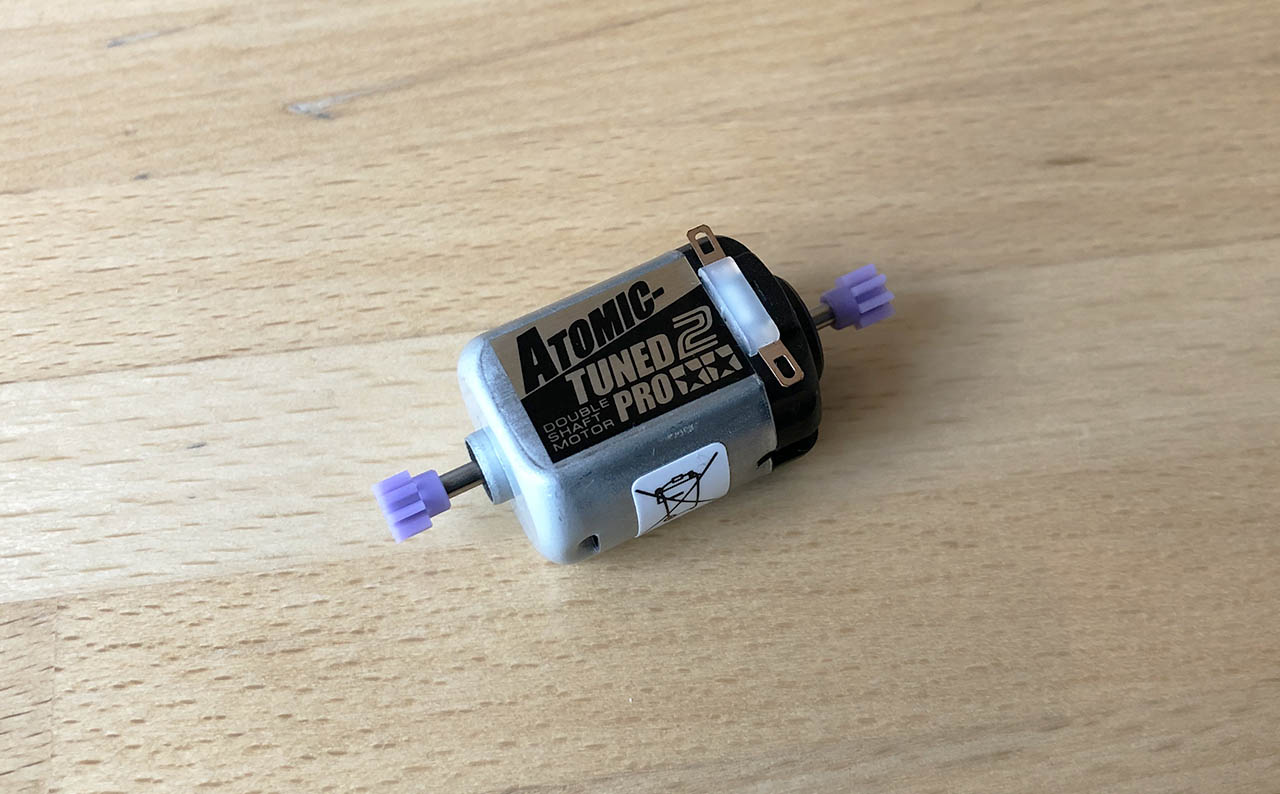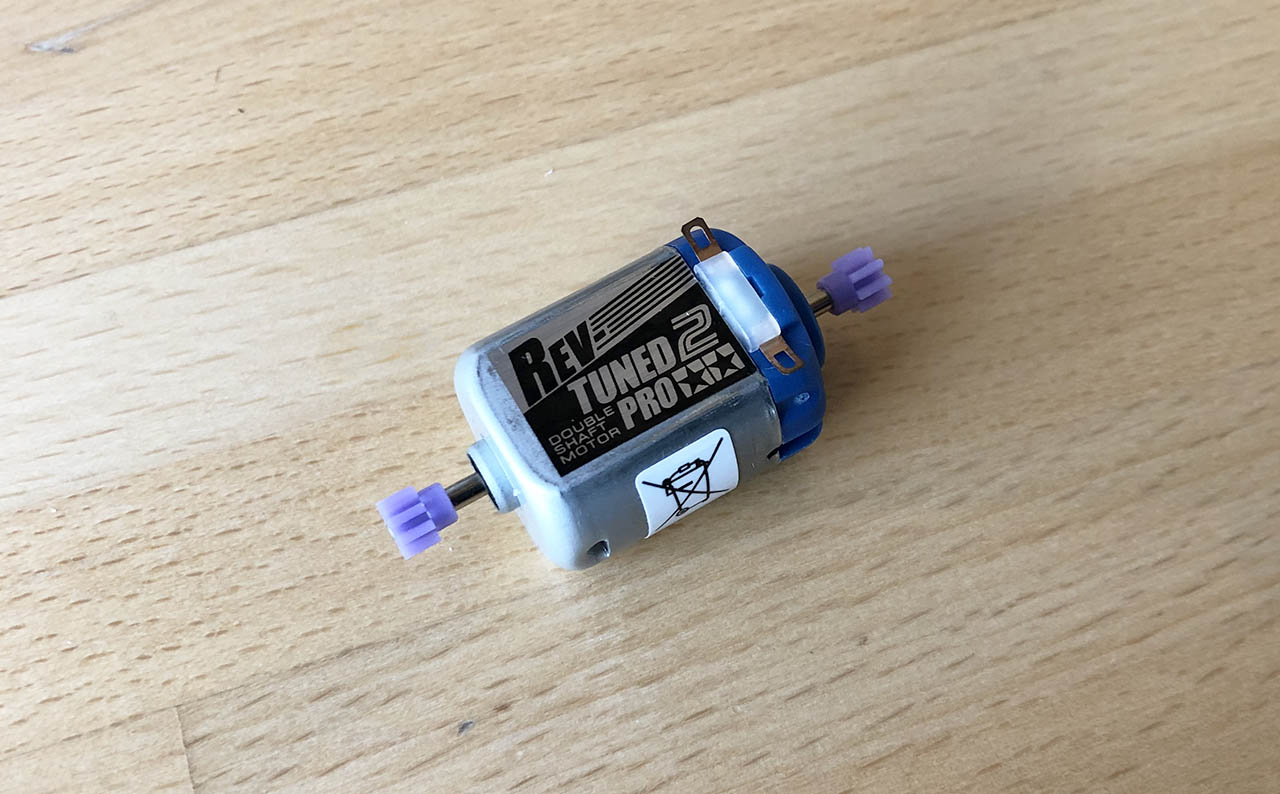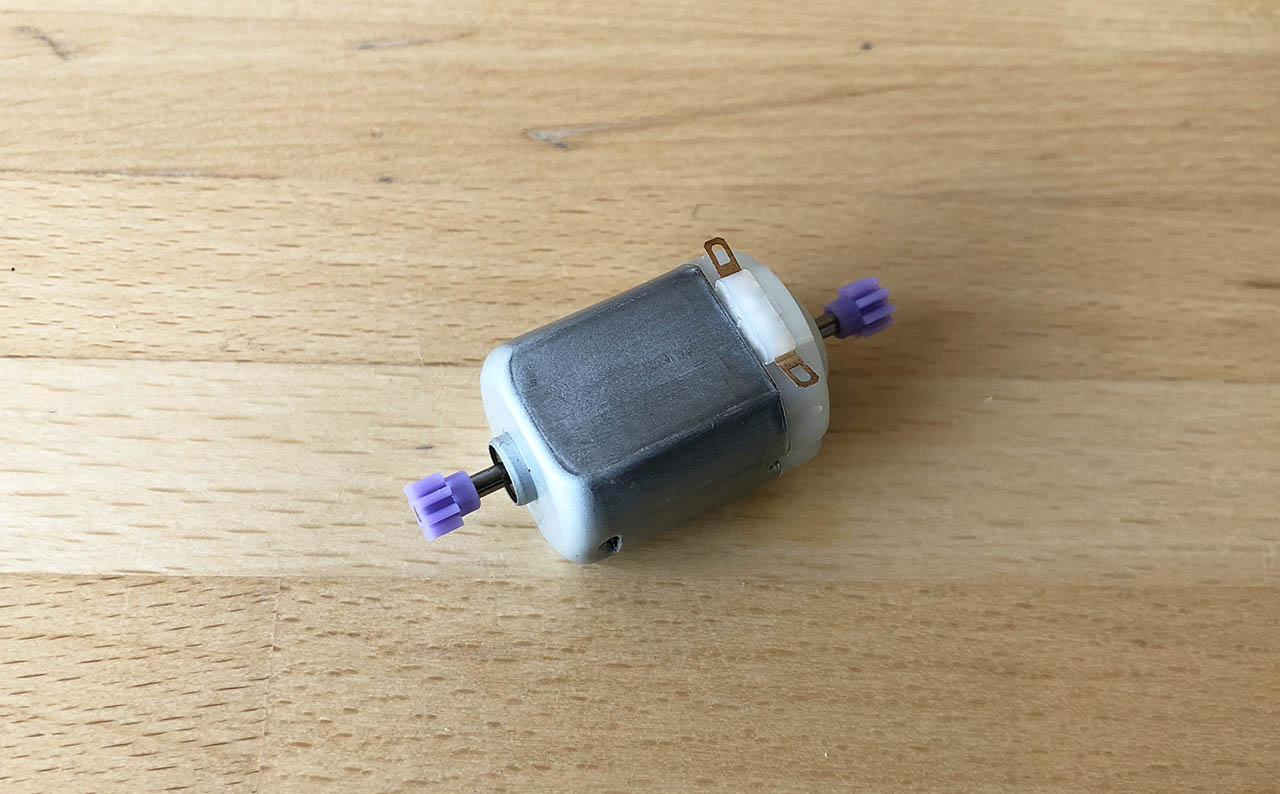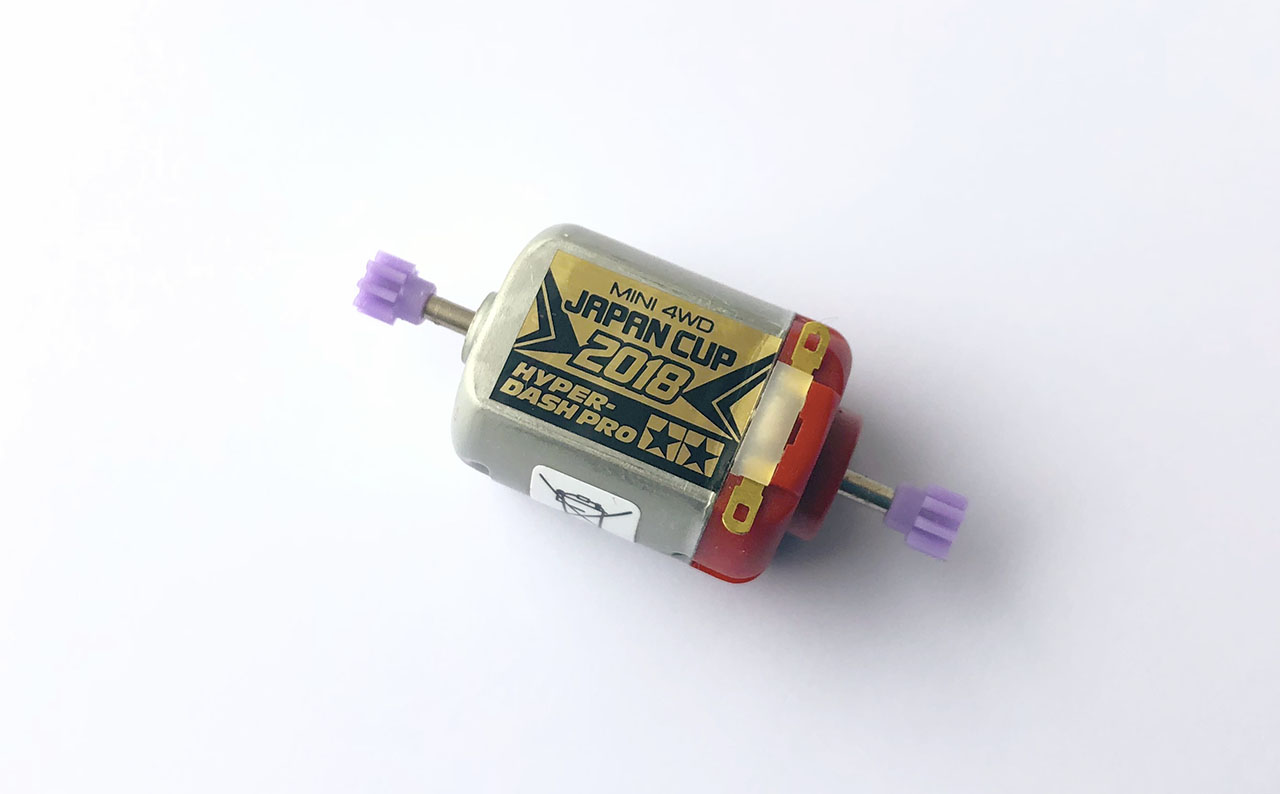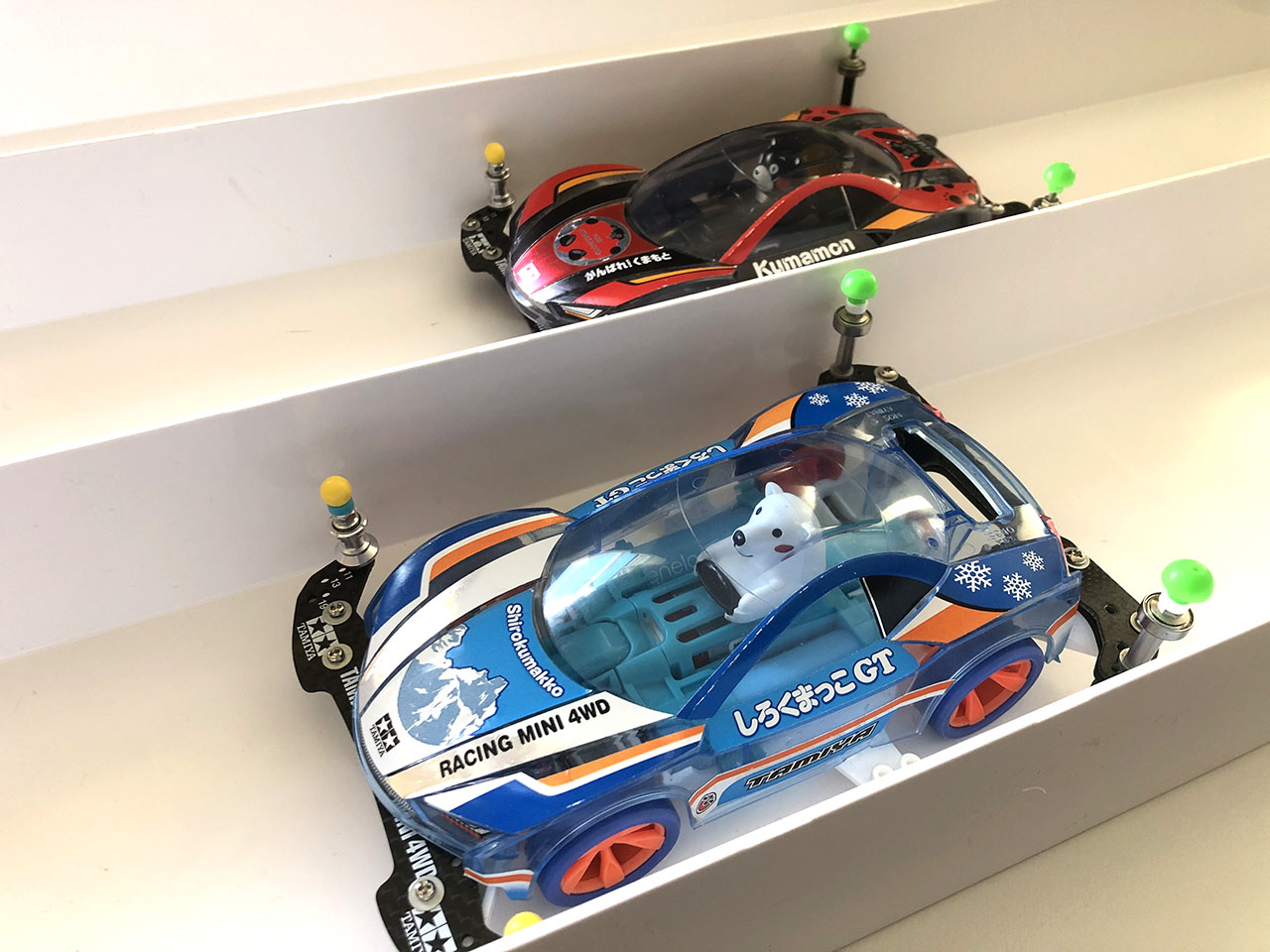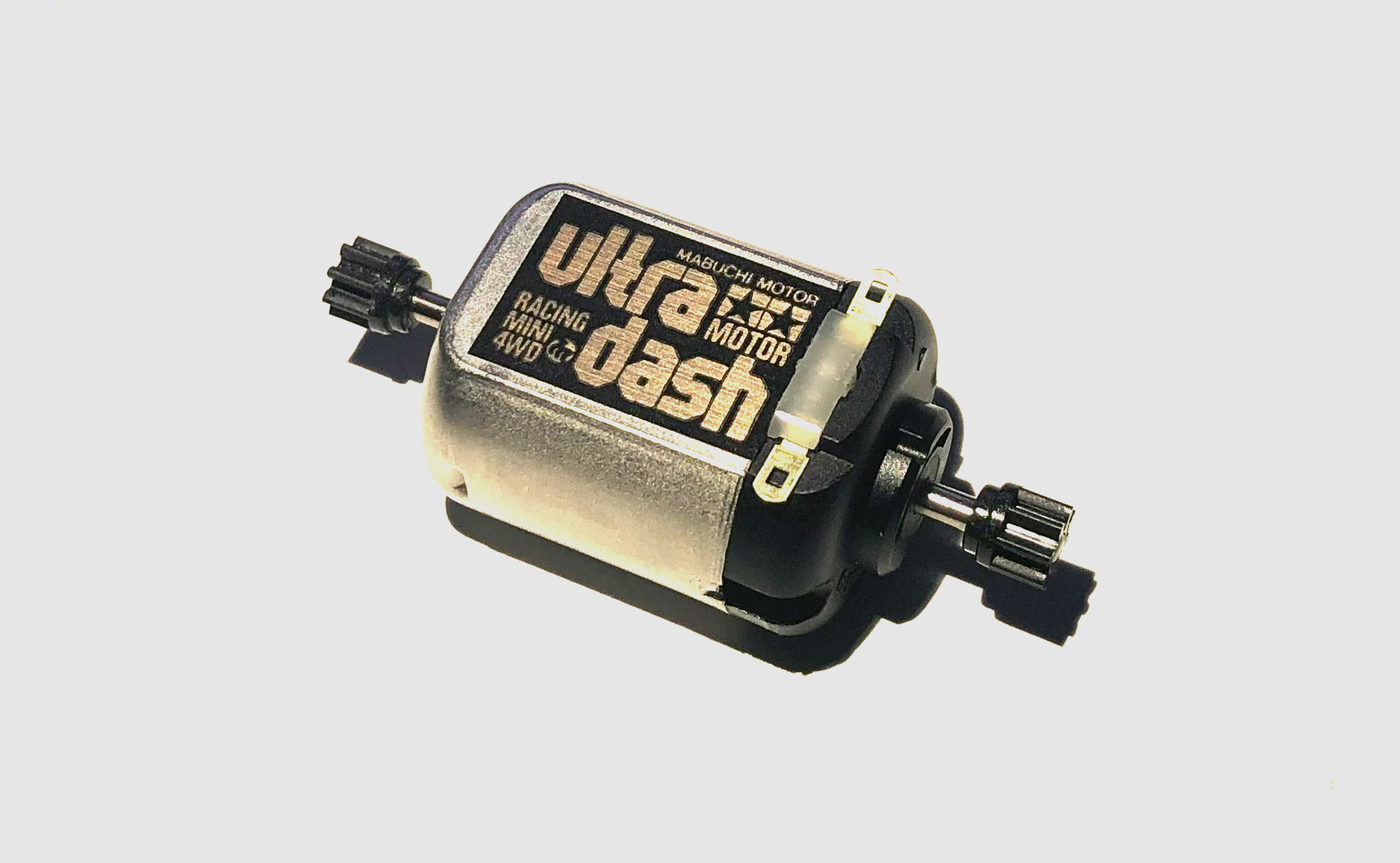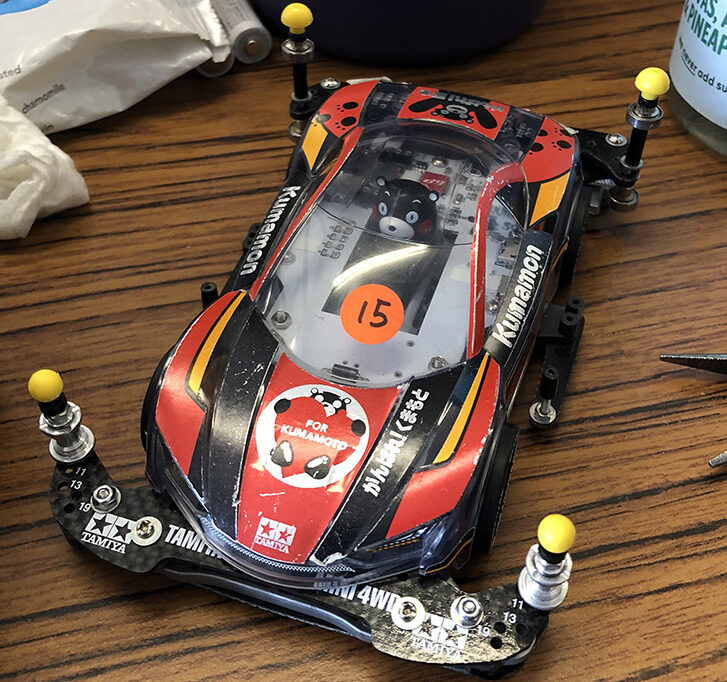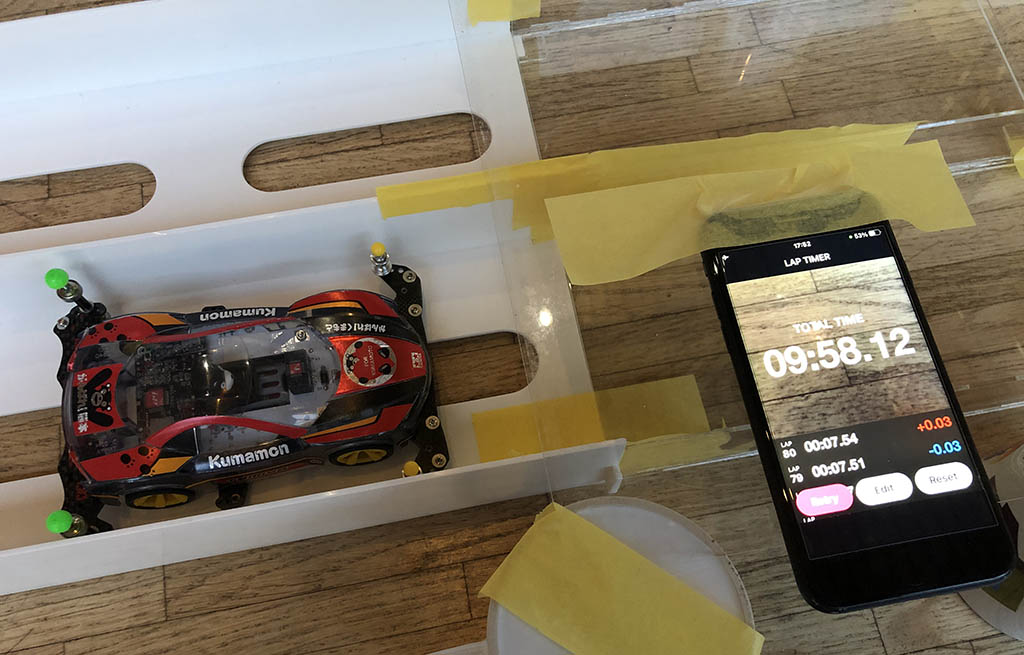Tamiya Atomic tuned motor is one of the most popular motors amongst Mini 4WD racers. It’s been around since the early days of Mini 4WD. It has a great balance of speed and acceleration. It is faster than the standard motor (white back) that came with the kit and not too fast for most technical tracks. With the introduction of Tamiya Mini 4WD pro, Tamiya introduced the double shafted version of the motor and calls it the Atomic Tuned 2 Motor Pro.
So what is the top speed of my Mini4WD with this motor? How fast can it propel my Mini 4WD to the top speed?
Can we work out the potential performance of the Tamiya Atomic Tuned 2 Motor Pro based on the information on the packaging?
Let’s take a look at the back of the packaging.
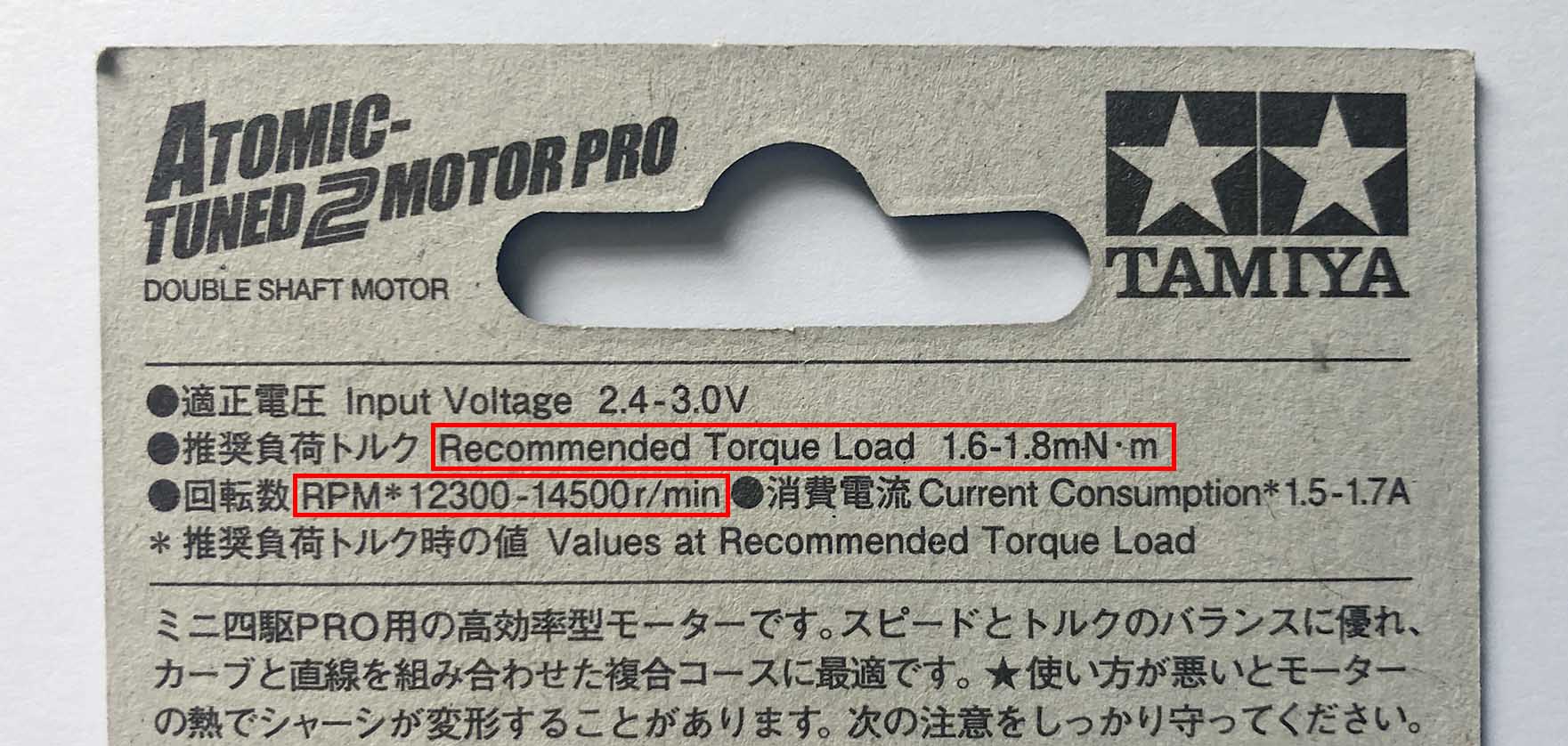
Tamiya has given us some useful information:
Recommended Torque Load 1.6 - 1.8mN-m
RPM: 12300 - 14500 r/min
We can’t work out the speed and acceleration of our Mini 4WD just yet. We need 3 more pieces of information that we can get from our Mini 4WD: mass, wheel diameter and gear ratios.
Mass
We can measure the mass of our Mini 4WD with a digital scale. In our case, our Mini 4WD has a mass of 160 grams.
Wheel diameter
We can measure the diameter of the wheel (including tyres) with a calliper (or a ruler if you don’t have a calliper). The wheels on our Mini 4WD has a diameter of around 2.61cm.
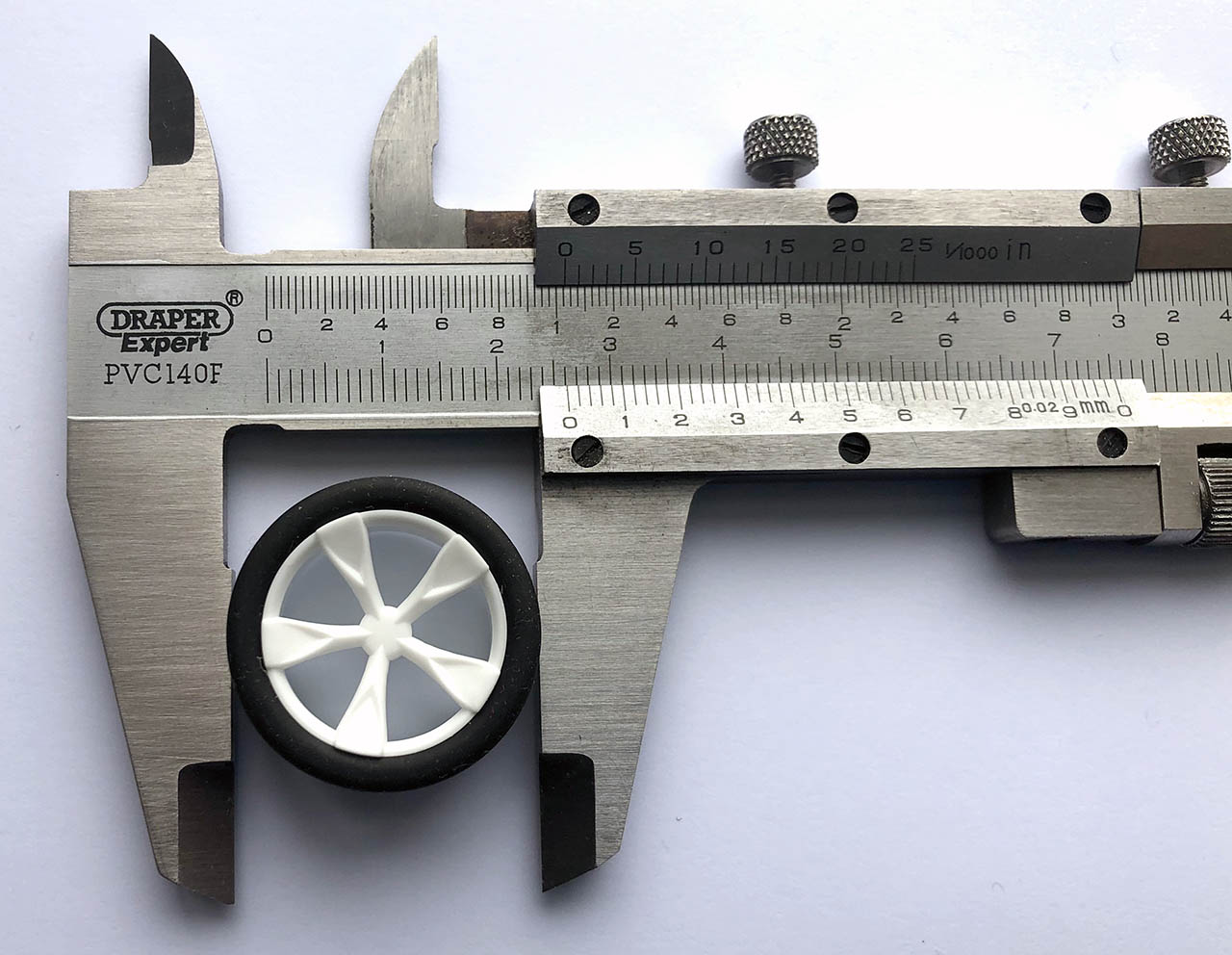
Gear ratios
Our Mini 4WD is a Mini 4WD Pro with MA chassis. It came with the green and pink gears which have a gear ratio of 3.5:1.
Top speed
Let’s calculate the top speed.
Every time the wheel complete one rotation, the car will travel the distance of wheel diameter × Pi (circumference of a circle is 2 × pi × radius or diameter × Pi)
Based on this understanding we can derive:
Speed (in metre per second) = Wheel rotation per second × Diameter of the wheel (in metre) × Pi
How do we work out the wheel rotation per second?
The motor is connected to the wheel via a set of gears. We know the gear ratio is 3.5:1. It means for every one rotation of the wheel, the motor rotates 3.5 times. RPM stands for rotation per minute.
Wheel RPM = Motor RPM / gear ratio
Based on Tamiya’s info, the motor RPM is between 12300 and 14500. Let’s take the higher number.
Wheel RPM = 14500 / 3.5
Wheel RPM = ~4143 (r/m)
Wheel rotation per second
Now we need to work out the wheel rotation per second. Since we know 1 minute is equal to 60 seconds. So we just need to divide Wheel RPM by 60.
Wheel rotation per second = Wheel RPM / 60
Wheel rotation per second = ~4143 / 60
Wheel rotation per second = ~69 (r/s)
Diameter of the wheel
Before we can get to the final part, we need to convert the diameter of the wheel from centimetre to metre. 1 metre has 100 centimetres.
Wheel diameter (m) = Wheel diameter (cm) / 100
Wheel diameter (m) = 0.0261 (m)
Finally we can put all the figures together to work out the top speed
Speed (in metre per second) = Wheel rotation per second × Diameter of the wheel (in metre) × Pi
Speed (in metre per second) = 69 × 0.0261 × 3.14
Speed (in metre per second) = ~5.7 (m/s)
If we also include the lower number in our maths, we can calculate the potential speed of our Mini 4WD which is 4.8 to 5.7 m/s. That’s pretty fast but not as fast as the fastest 100m Olympic champion runner.
Can you work out the speed of the best 100m runners in the world?
Why do we use metre per second instead of kilometre per hour like motor cars?
Because it is easier to visualise the speed of our Mini 4WD with metre per second (m/s).
In a Tamiya Junior Circuit (3 lanes), the length of a straight track part is 0.54 metres. 2 straight parts are about 1 metre long. If our Mini 4WD can travel at 5m/s, then it can cover ~10 straights in 1 second.
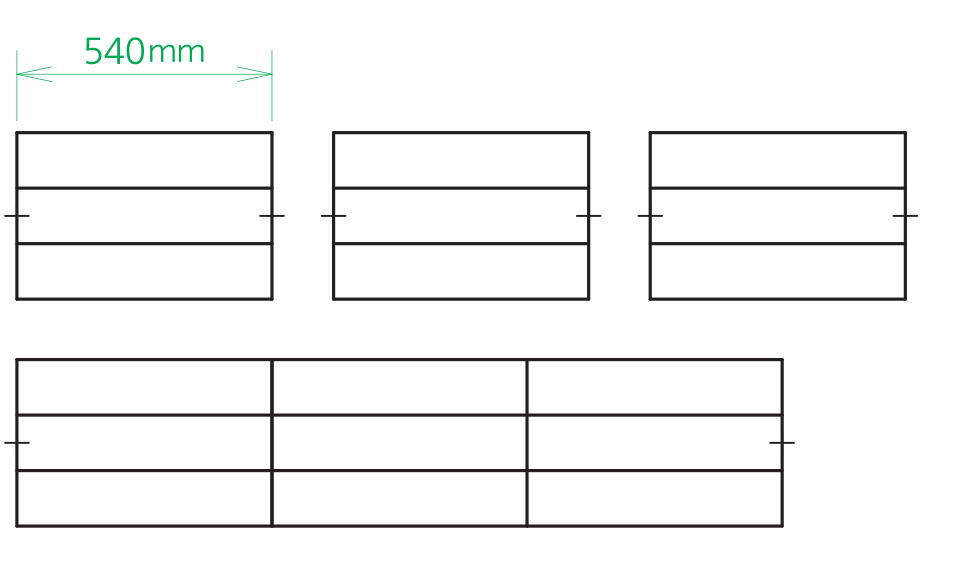
Source: Tamiya
Acceleration
Now we know the potential top speed of our Mini 4WD. How fast can it get to that top speed? Let’s calculate the acceleration. We need the help of Issac Newton.
Newton's law
In Newton's second law: Force (N) = mass (kg) × acceleration (m/s2 )
More information on Britannica encyclopedia: https://britannica.com/science/Newtons-laws-of-motion/Newtons-second-law-F-ma
So acceleration (m/s2 ) = Force (N) / mass (kg)
We know the mass of our Mini 4WD which is 160 grams (or 0.16kg). We need to work out the Force that pushes the car forward.
Calculate Force from Torque
From the packaging, it says recommended Torque Load 1.6 - 1.8mN-m
Torque (Nm) = radius × Force
More information on Wikipedia: https://en.wikipedia.org/wiki/Torque
E.g. If you push a lever of length 1 metre with a force of 1 Newton, the torque is 1Nm. If you push a lever of length 0.5 metres with a force of 1 Newton, the torque is 0.5Nm.
So Force (N) = Torque (Nm) / radius (m)
Let’s take the higher number 1.8mN-m. The m in front of N is mini, which is 1000th. So we divide the 1.8 by 1000 and we get 0.0018Nm.
This gives us the torque of the motor. So how can we work out the torque on the wheel?
Once again we know the motor is connected to the wheel with some gears. We know the ratio of the gears (3.5:1). Therefore
Torque of wheel = Torque of motor × gear ratio
Torque of wheel = 0.0018 × 3.5
Torque of wheel = 0.0063 (Nm)
Radius
Since we know the diameter of the wheel, we can work out the radiusof the wheel:
Radius of wheel (in metres) = diameter of wheel (in centimetres) / 100 / 2
Radius of wheel (in metres) = 2.61 / 100 / 2
Radius of wheel (in metres) = 0.01305 (m)
We can now calculate the Force:
Force = Torque (Nm) / radius (m)
Force = 0.0063 / 0.01305
Force = ~0.48 (N)
Finally we can calculate the acceleration:
Acceleration (m/s2) = Force (N) / mass (kg)
Acceleration = 0.48 / 0.16
Acceleration = ~3 (m/s2)
If we also include the lower number in our maths, we can calculate the potential acceleration of our Mini 4WD which is around 2.68 to 3 m/s2 .
So what does it mean?
Assuming the torque is constant throughout and there is no friction...
It means for every second our Mini 4WD accelerate, it will increase its speed by 2.68 – 3 m/s.
Therefore...
At time 0, car speed is 0 m/s
At time 1 second, car speed is 3 m/s (if we use the higher number)
At time 2 second, car speed is 6 m/s and so on.
However from our previous calculations, we calculated the potential top speed is ~5.7 m/s. Therefore it can’t get to 6 m/s unless it gets some extra push or it is going down a slope. Based on this, we can calculate the time it takes to get from a stand-still to top speed:
Speed (m/s) = acceleration (m/s2) × time (seconds)
Time = Speed / acceleration
Time = 5.7 / 3
Time = 1.9 seconds
In summary
From the information on the Atomic Tuned 2 Motor Pro packaging, we calculated the potential top speed (4.8 to 5.7 m/s) and the potential acceleration (2.68 to 3 m/s2) of our Mini 4WD. We applied the formula of Newton’s second law, torque and gear ratio. We also applied conversions e.g. from RPM to RPS, grams to kilograms, centimetre to metre etc…
Speed (in metre per second) = Motor RPM / gear ratio / 60 × Diameter of the wheel (in metre) × Pi
Acceleration (in m/s2) = Torque of motor (Nm) × gear ratio / diameter of wheel (in centimetres) * 100 * 2 / mass (kg)
Can you work out the potential top speed and acceleration of your favourite motor?
Certainly to get a complete picture, we are going to need to take other factors into account such as battery performance, motor condition, torque curve, mechanical friction, tyre grip and track condition etc...
Better still we can setup scientific experiments to measure the actual acceleration and top speed of our Mini 4WD and we can compare the results with the number on the package. Do you think it is going to be better, worse or same as the numbers on the package?
We are planning to do this in our future experiments. If you want to find out the result, keep checking our website and social media.
Hope you enjoyed this scientific journey. Please feel free to leave a comment on our Facebook page @Mini4Science. Thank you for visiting.

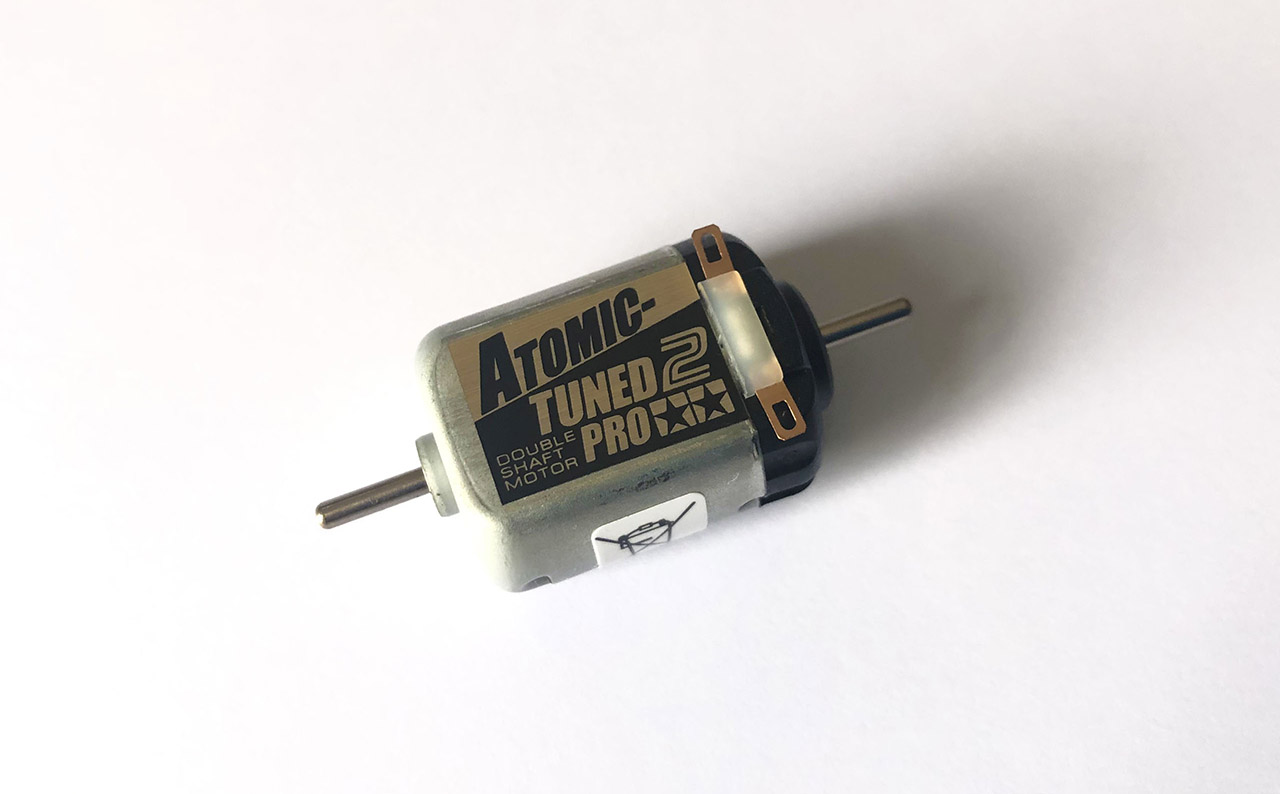
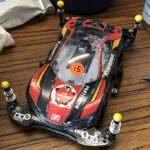
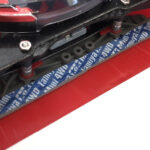
![7 different Tamiya Mini 4WD low profile small diameter tyres [Item no: 95208, 95205,95152, 95281, 95304]](https://mini4science.com/wp-content/uploads/2024/09/IMG_0538_mod2-150x150.jpg)
![8 different Tamiya Mini 4WD metal rollers [Item no: 95612, 15522, 95643, 95497, 15426, 95160, 15345, 15475]](https://mini4science.com/wp-content/uploads/2024/07/IMG_0296-150x150.jpg)
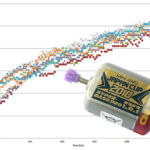
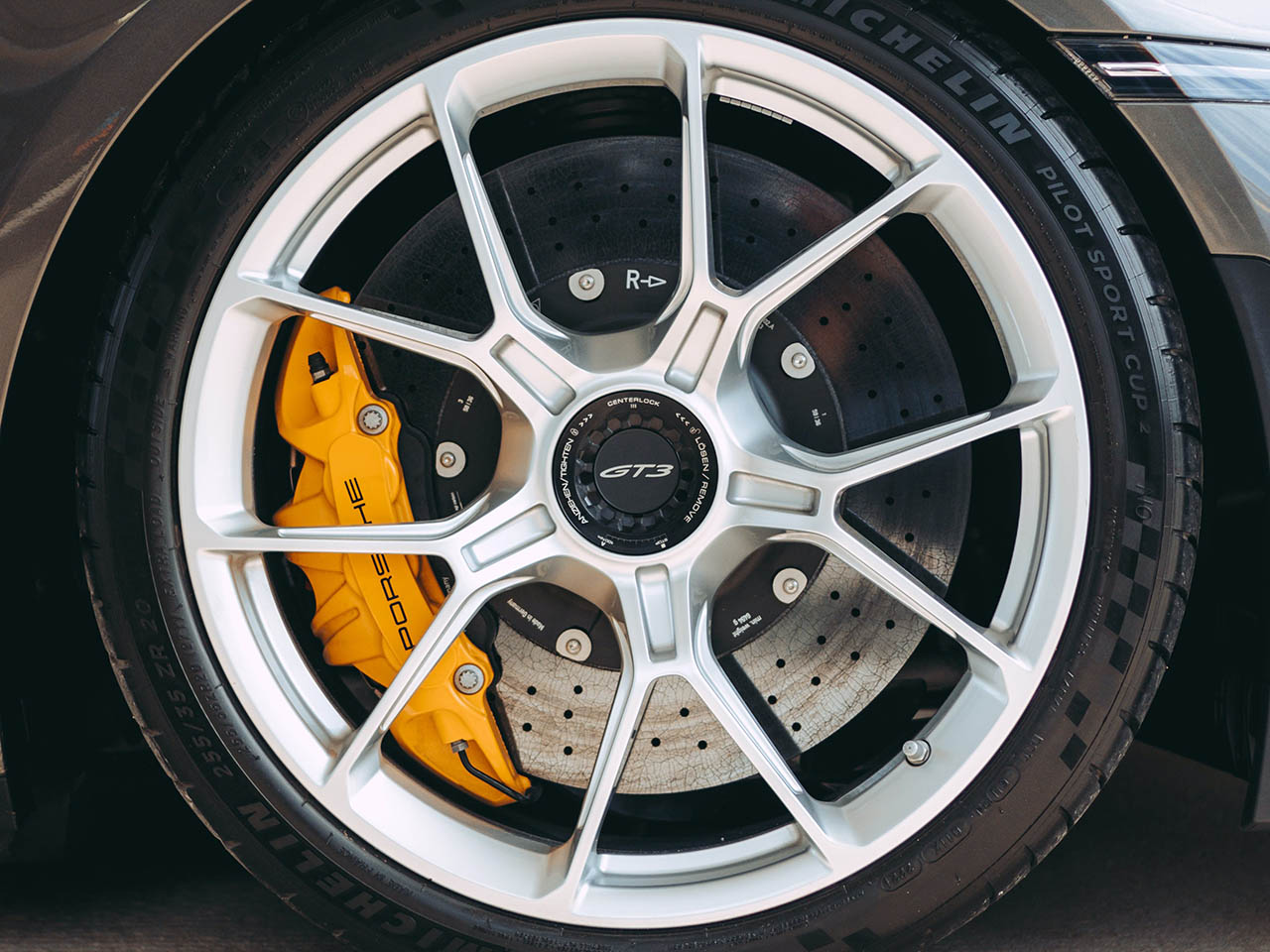


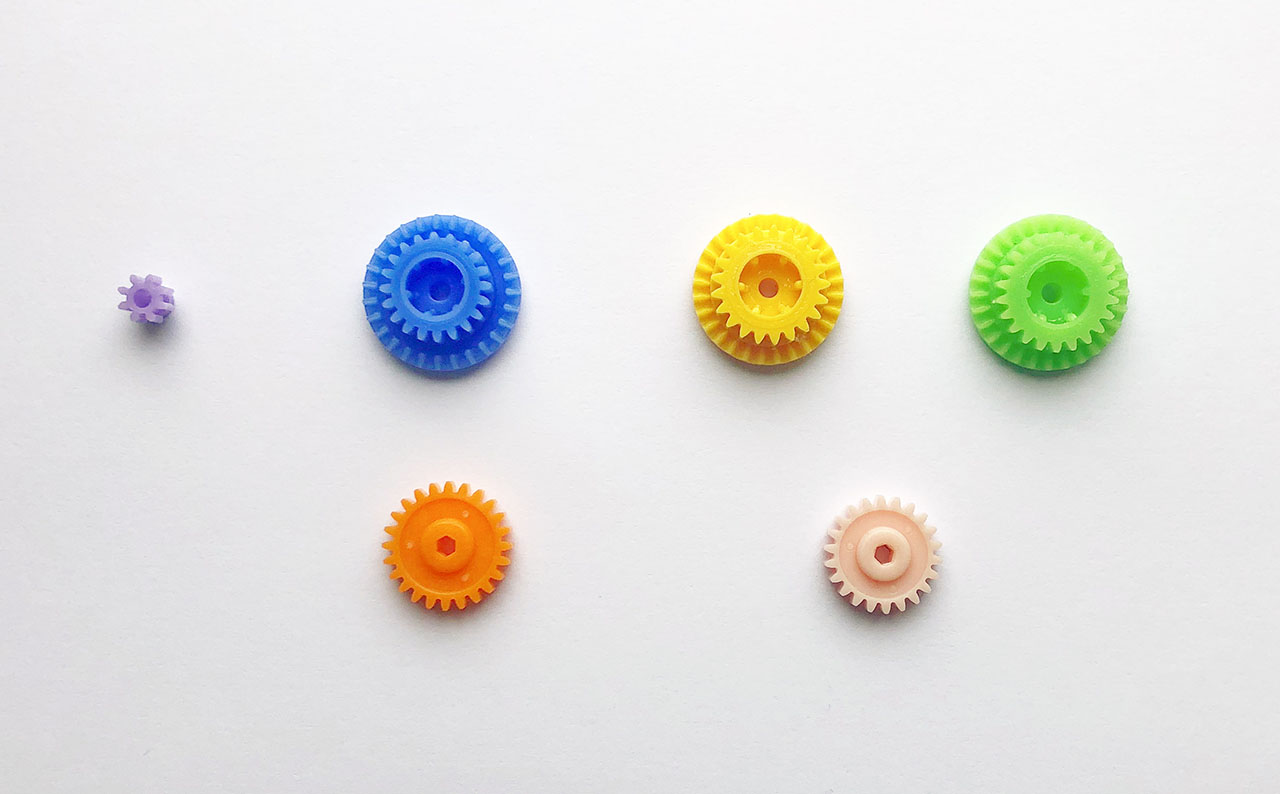
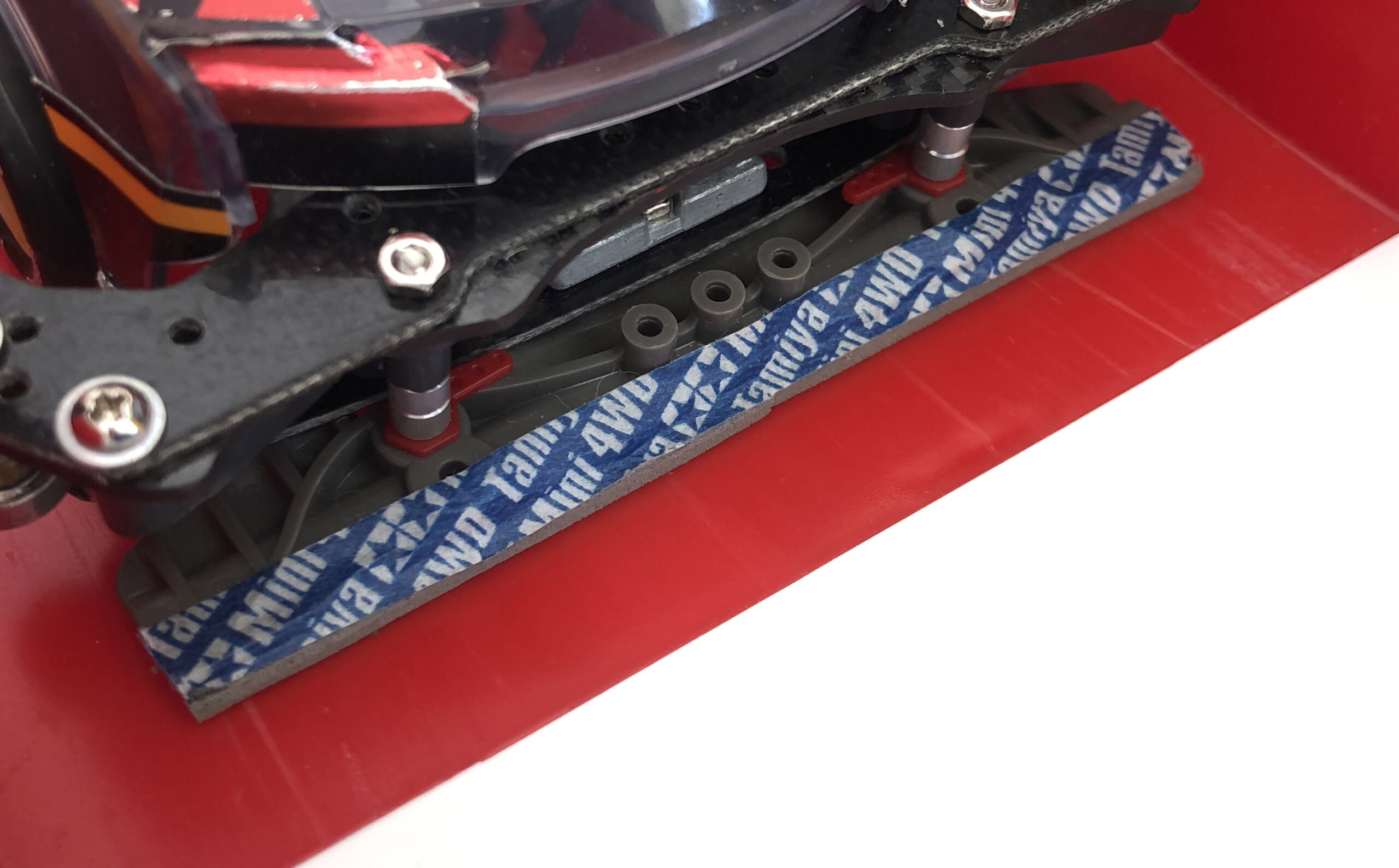
![7 different Tamiya Mini 4WD low profile small diameter tyres [Item no: 95208, 95205,95152, 95281, 95304]](https://mini4science.com/wp-content/uploads/2024/09/IMG_0538_mod2.jpg)
![8 different Tamiya Mini 4WD metal rollers [Item no: 95612, 15522, 95643, 95497, 15426, 95160, 15345, 15475]](https://mini4science.com/wp-content/uploads/2024/07/IMG_0296-scaled.jpg)

